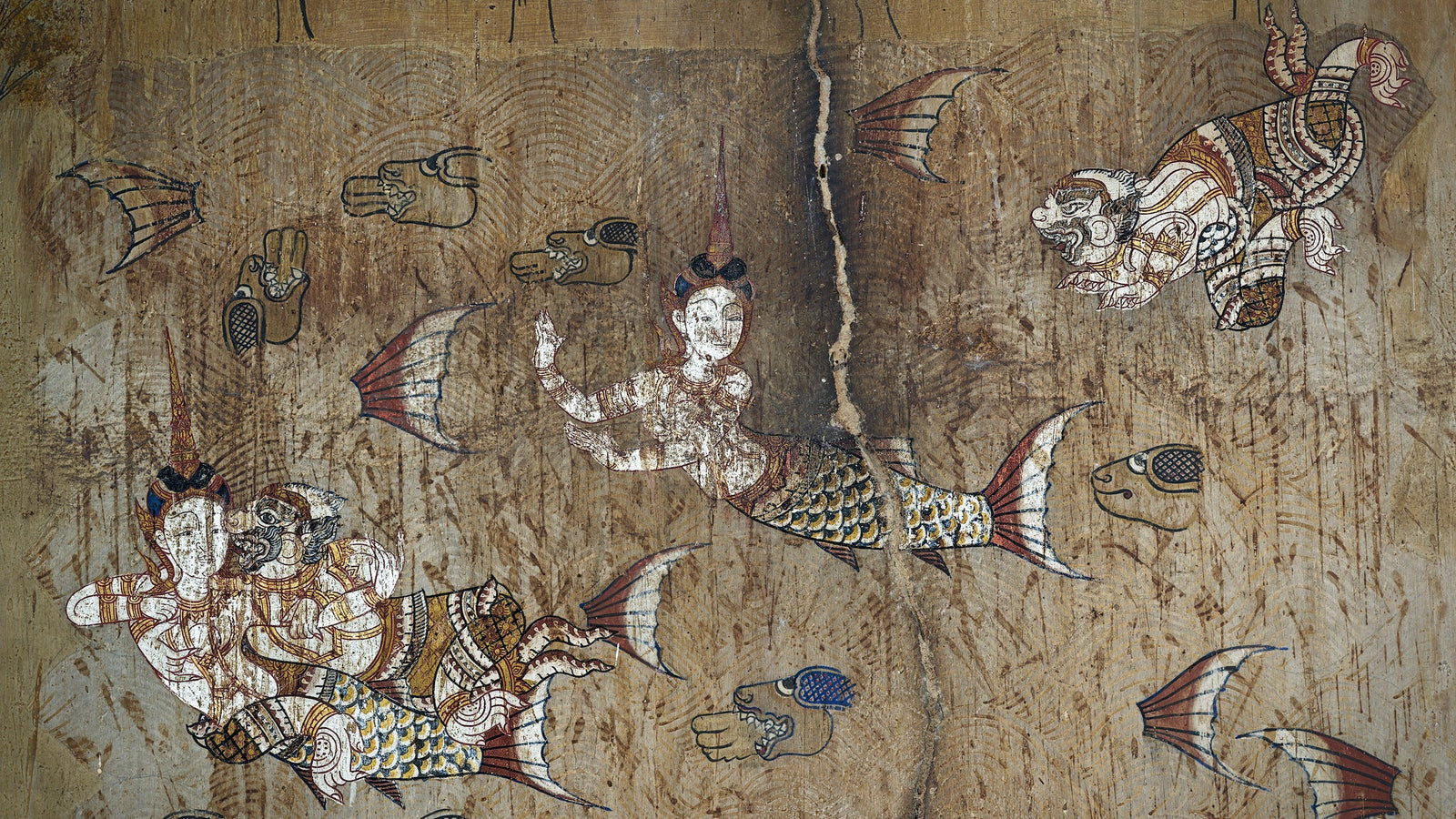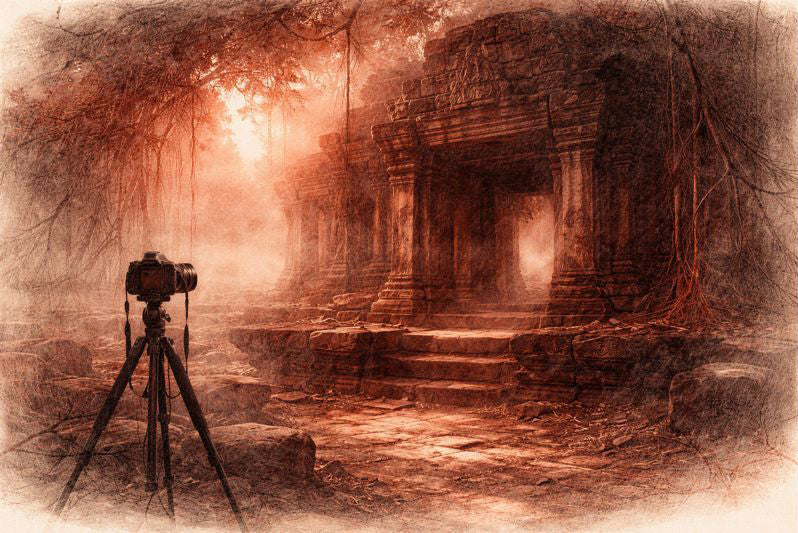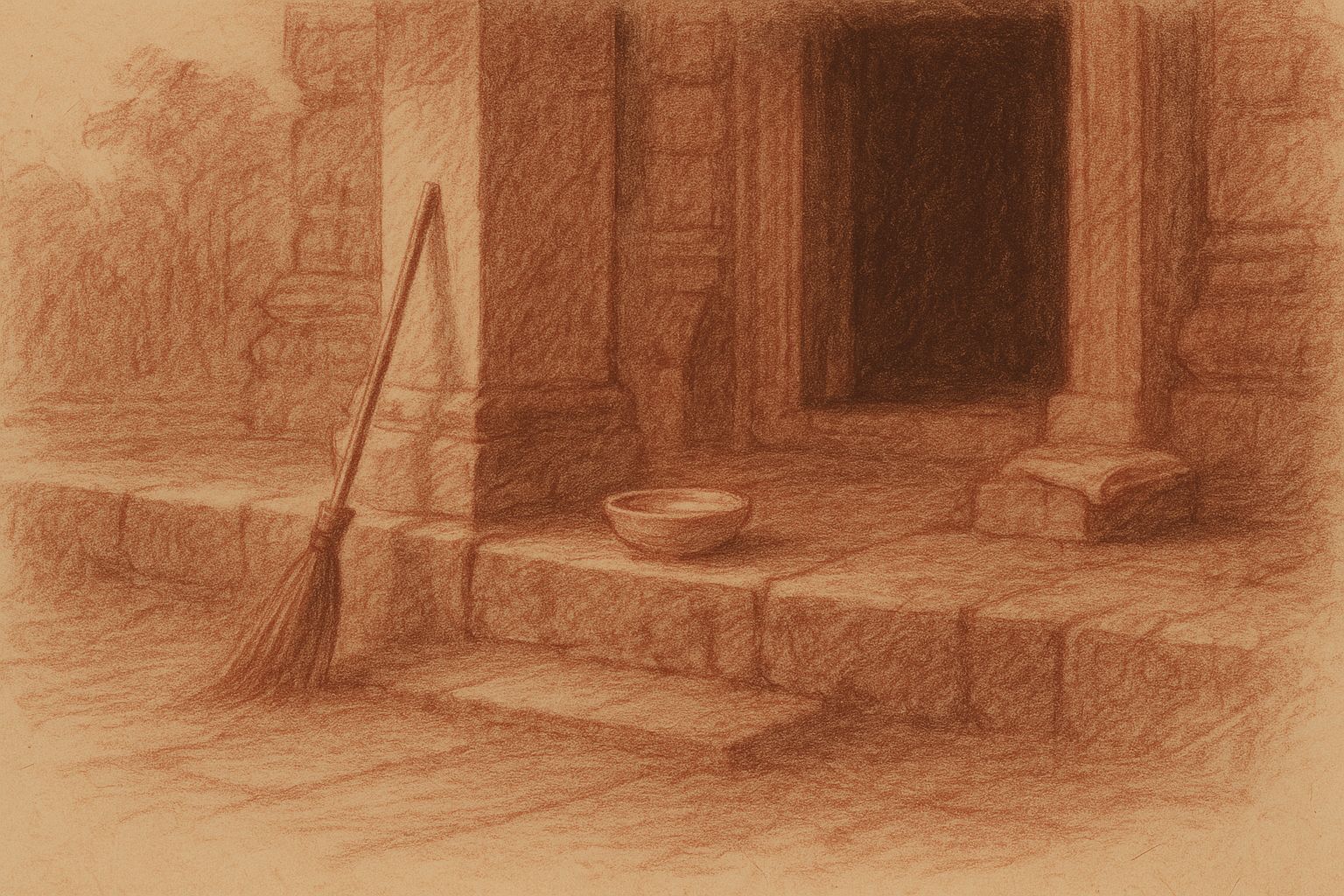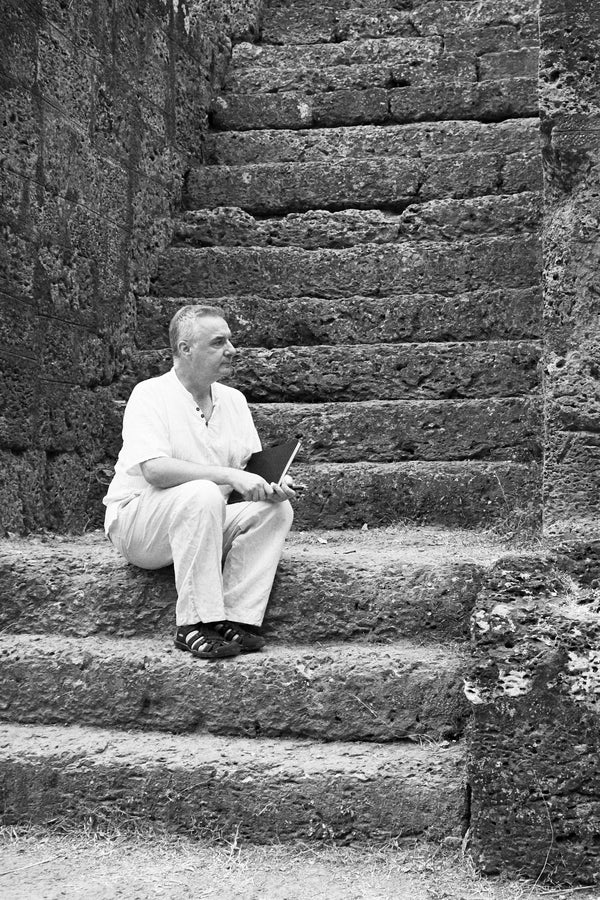Complimentary worldwide shipping on orders over $400 · No import tariffs for most countries
Complimentary worldwide shipping on orders over $400 · No import tariffs for most countries

Hanuman Courting Suphannamatcha
5 min read
In a change of pace this morning, Annie and I visited the contemporary Buddhist temple of Wat Bo Pagoda (Khmer: វត្តរាជបូណ៌), also called Wat Raja Bo.
We live very close to the Angkor Archaeological Park, but Wat Bo is even closer, we actually live in Wat Bo Village.
Wat Bo is the largest and most important monastery in Siem Reap city, indeed it’s the oldest in the entire province, dating back to the 18th century CE. The original vihara was built back when Siem Reap was a Siamese province.
We love to visit the old vihara, it’s one of our favourite modern buildings. Its inner walls are decorated with scenes from the Hindu Rama Epic poems, the Ramayana, painted in the 19th century CE. The Ramayana was the favourite epic amongst Khmers in Angkorean times, and we’ll be discussing many examples of Khmer art that depict Rama’s adventures in this journal. It was so deeply rooted in the minds of the Khmers that they re-wrote it in their own language as the Reamker (Rama’s glory) or Ramakerti (Rama’s story) in the 14th to 16th centuries CE.
The Reamker was a text especially revered by the Buddhists after the fall of Angkor, when the Mahabharata and the Puranas were forgotten, following the general abandonment of Sanskrit literature in favour of Pali canonical texts. Buddhism modified the Ramayana by perceiving Rama as a bodhisattva (or Buddha-to-be) and the whole as a sort of moral tale similar to a jataka. Where the Ramayana emphasizes Rama’s heroism and his victory over life’s adversity, the Reamker focuses on his ‘glory’ which is spiritual in value.
The mural in the old vihara of Wat Bo are some of the most important paintings in all of Cambodia. They may not be as exquisite as some of the carvings made at nearby Angkor Wat Temple some 700 years earlier, but they show great precision of design, a good balance of volumes and an artful sense of movement. The ‘patchwork’ arrangement of the panels and the tasteful choice of background colours is unique in Southeast Asia, and the thematic development is unique for Cambodian murals.
The stories depicted here unfold in a series of episodes, each centred on a specific character: the youth of Rama, the abduction of Sita and the alliance with monkeys, Hanuman’s adventures, the fights against Kumbhakarna, and finally the battle of Lakshmana with Indrajit.
I’ll be discussing a lot of those stories here, with examples of their telling in ancient stone and in more modern paintings like these. This morning one panel in particular caught my eye, so much so that I thought I’d rather like to have my version of it hanging on my wall at home, so here it is.

Figure 1. Hanuman Courting Suphannamatcha, Wat Bo Pagoda, Cambodia. 2023
This 19th century CE painting in Wat Bo’s old vihara depicts a scene from the Rama Epic, where the monkey hero Hanuman is courting Suphannamatcha, the mermaid queen and daughter of the demon-king Ravana.
Hanuman, the son of Vayu, the god of wind, is the albino half-god monkey who assists Rama in his battle against the demon Ravana.
Ravana, the demon-king of Lanka, sends his daughter, the evil princess Suphannamatcha (or Suvannamaccha, Khmer: សុវណ្ណមច្ឆា), to foil his enemy Hanuman's plans to build a bridge to Lanka, but she falls madly in love with him instead.
The Story
When Rama's wife Sita is kidnapped, he enlists Hanuman's aid in rescuing her.
Hanuman learns that Sita is being held captive on the island of Lanka. Rama orders him to build a causeway to Lanka from India so that Rama's army can attack. Hanuman collects his band of Vanaras and they begin throwing huge boulders into the sea to make a foundation for the causeway.
After a few days they notice something is wrong and call Hanuman to report. They tell him that each day they throw rocks into the sea and the next day they are gone.
Hanuman asks for volunteers to join him while he instructs the others to continue throwing rocks into the sea. When several volunteers have stepped forward Hanuman leads them into the waves, and they find a large number of mermaids living under the water. As they watch, new rocks are tossed in, and the mermaids take the rocks and carry them away. Hanuman looks for their leader and he spots lovely mermaid supervising the others. He swims towards her but she skillfully evades him. Time and again he begins an attack but it comes to nothing.
In the scene depicted in Figure 1, Hanuman finds he is falling in love with the creature, so he changes his tactics and begins to silently woo her. She responds to him and soon they are together at the bottom of the sea.
Hanuman asks the mermaid why she is stealing the rocks. She tells him that she is Suphannamatcha, a daughter of Ravana (the demon who had abducted Sita). When Ravana saw Hanuman's Vanaras building a causeway he instructed Suphannamatcha to stop it. Hanuman tells the mermaid why he is building the causeway. He tells her of the abduction of Sita, the battle between Rama and her father Ravana and why they started to build a bridge to reach Lanka.
Suphannamatcha turned to Hanuman and her eyes were filled with love. No more, she said, would she prevent Hanuman from completing his mission. Her mermaids would, in fact, return all the stolen rocks to the causeway.
The two make passionate monkey/fish love at the bottom of the sea before Hanuman returns to his adventures.
Later, Suphannamatcha discovers she is pregnant with their son Matchanu, who is born with the upper body of a monkey but with a fish tail. Rama later cuts off Matchanu’s tail so that he will no longer be part fish. But those are tales for another day.
I hope that you enjoy this image too, I’m making it available to purchase in a new section of My Work called Contemporary Pagodas, dedicated to beautiful colour images made from modern murals.
More from Wat Bo and other pagodas soon, as well as more images and tales from the temples of Angkor.
If you enjoyed this article, and you would like to continue to share in my adventures, please sign up for my newsletter below. Since I no longer post on social media, this is the best way to stay up-to-date with my work.
Please also see:
Also in Library

Before the Shutter Falls
3 min read
Before the shutter falls, fear sharpens and doubt measures the cost of waiting. In the quiet hours before dawn, the act of not-yet-beginning becomes a discipline of attention. This essay reflects on patience, restraint, and the quiet mercy that arrives when outcome loosens its hold.

Those Who Keep the Way Open — On the Quiet Guardians of Angkor’s Thresholds
3 min read
Quiet gestures shape the way into Angkor — a swept stone, a refilled bowl, a hand steadying a guardian lion. This essay reflects on the unseen custodians whose daily care keeps the thresholds open, revealing how sacredness endures not through stone alone, but through those who tend its meaning.

Multiplicity and Mercy — The Face Towers of Jayavarman VII
5 min read
A new vision of kingship rises at the Bayon: serene faces turned to every horizon, shaping a world where authority is expressed as care. Moving through the terraces, one enters a field of steady, compassionate presence — a landscape where stone, light, and time teach through quiet attention.
Join My Studio Journal
Receive occasional letters from my studio in Siem Reap—offering a glimpse into my creative process, early access to new fine art prints, field notes from the temples of Angkor, exhibition announcements, and reflections on beauty, impermanence, and the spirit of place.
No noise. No clutter. Just quiet inspiration, delivered gently.
Subscribe and stay connected to the unfolding story.

Join My Studio Journal
Receive occasional letters from my studio in Siem Reap—offering a glimpse into my creative process, early access to new fine art prints, field notes from the temples of Angkor, exhibition announcements, and reflections on beauty, impermanence, and the spirit of place.
No noise. No clutter. Just quiet inspiration, delivered gently.
Subscribe and stay connected to the unfolding story.
